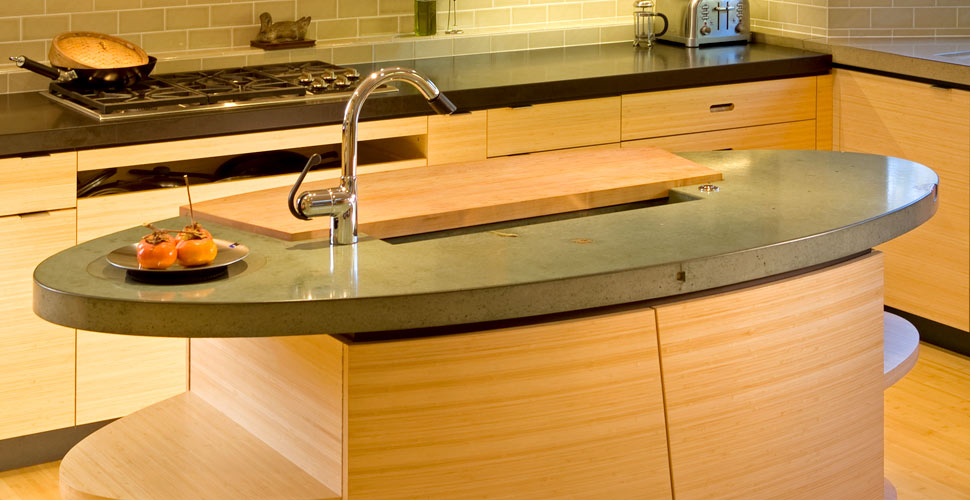Share This Post
Curved Concrete Pieces: Drafting and Design Considerations
Q: How do you smoothly draw out curves for islands, countertops, and curved walls? What are the main functional considerations when designing curved pieces?
If you are referring to simply outlining the perimeter of a random curve-shaped countertop, you can do that in numerous ways:
- Rough out the shape you want by drafting “french” curves on notebook-sized graft paper. Make sure it’s to a particular scale (1/2″ equals 1′-0″, for example). On some flat, thin surface template material such as foam core, thin plywood, masonite etc., lay out a grid pattern at 6″ square. Copy the curves from the 1/2″ scale drawing onto the grid on the full scale template. Smooth out the lines by using thin strips of bendable wood or metal to help guide your marker. Use a knife, power jig saw or hand saw to cut out the shape.
- A more direct approach is to simply use long thin strips of bendable board, masonite, or plexiglas, hold them to desirable shapes and trace their outline directly.
- If you wish to achieve true elliptical shapes, you can place two nails at various distances apart, loop a large, thin, sturdy string over them, stretch the string taut with a marker or pencil, tracing the resulting ellipse on the surface of the table.
- And, of course, there is the high-tech method: ask your friendly local architect friend or computer whiz to plot the curve on a CAD program and print it, or have it printed at a copy center on a plotter.
There are, I believe, important considerations when making any curved countertop piece, for example:
- Why a particular shape, is it for easing traffic flow?
- Is it a shape that “sculpts” the space in a harmonious way?
- Does it contrast with the rectangular environments we all seem to live in without looking out-of-place?
- Does it “push” the users away from the space, or invite them in?
- Does it envelope like a command center, or focus like a forum?
Perhaps one might look to the 1950’s for inspiration on curve-shaped tables and countertops. Many talented designers of that era spent a lot of brain power on conceiving the pleasing shapes that we associate with the 1950’s (think kidney-shaped pools and all).
Also, what is supporting the curved surface? Boxed cabinets? Will the vertical face of the cabinets flow with the shaped countertop (very expensive, but looks great), or will the cabinets be faceted (less expensive, but definitely diminish the impact of the curve)? What about simply supporting a large portion of the shape with a (shaped) post (less expensive, but definitely increases the impact of the curved countertop)? These are the questions I ask myself when designing curved shapes in our square world. Good luck and good designing!
Share This Post


Comments 1
Pingback: Recaps : Countertops | CounterTops Articles